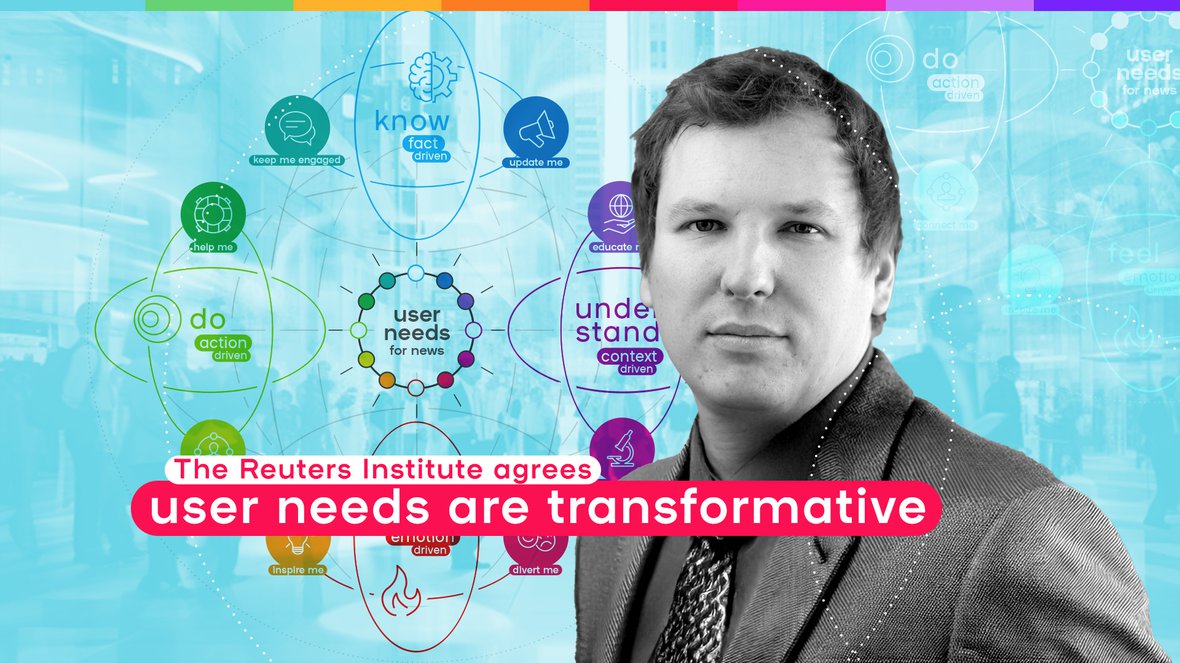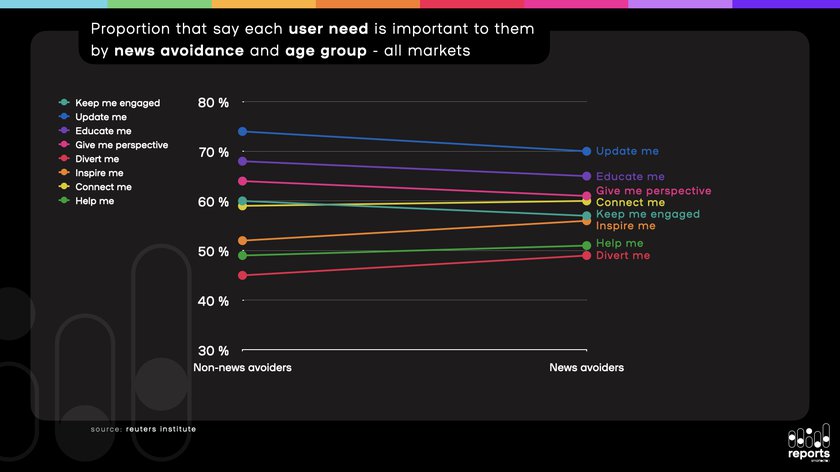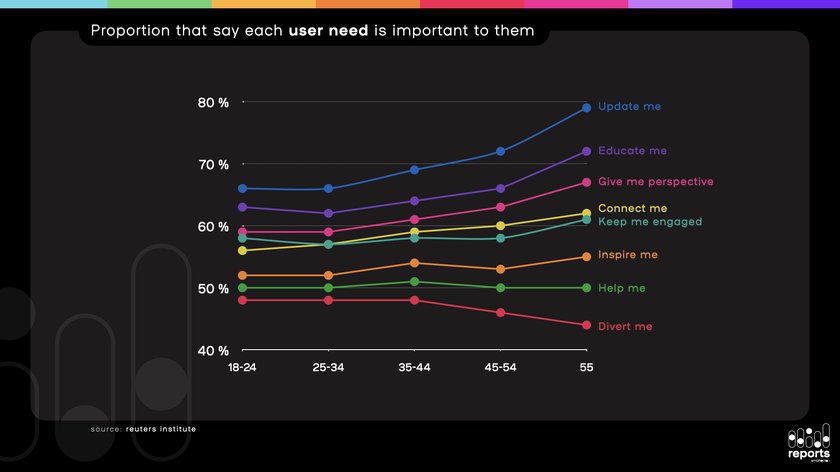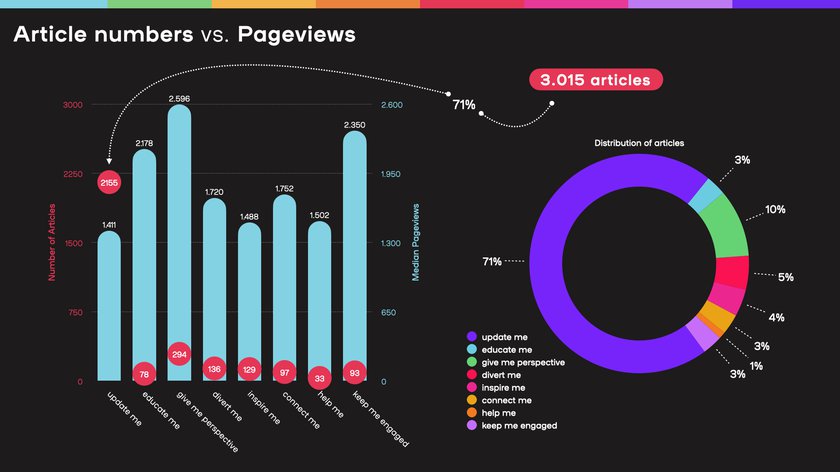Over a year after we launched the User Needs Model 2.0 in collaboration with Dmitry Shishkin, this model now forms the basis for significant research by the Reuters Institute for the Study of Journalism. Read on for our commentary on their annual news report.
Reflections on user needs are one of the key findings from the Digital News Report 2024. The media world looks forward to this report each year as it surveys news consumers in 47 countries about the state of journalism.
A lot of the conclusions are painful to read. Trust in news media remains low, and the willingness to pay for online news has not increased for three years. The phenomenon of news influencers and the impact of TikTok are discussed, and naturally, comments on AI in journalism.
Some interesting figures that might give you pause for thought:
- Social media are driving less traffic to news platforms. Facebook news consumption has declined by 4 percentage points across all countries over the past year.
- Traditional media are losing their news consumers to social media. YouTube is used for news by almost a third (31%) each week, WhatsApp by around a fifth (21%), while TikTok (13%) has, for the first time, surpassed Twitter (10%), now rebranded as X.
- People find it difficult to discern which sources they can trust. Concern about what is real and what is fake on the internet regarding online news has increased by 3 percentage points in the past year, with around six in ten (59%) expressing concern.
- The appeal of news consumption is waning. Around four in ten (39%) now say they sometimes or often avoid the news – an increase of 3 percentage points on last year’s average.
- Business models are under pressure. Only 17% say they paid for any online news in the last year across a basket of 20 wealthier countries. Norway (40%) and Sweden (31%) have the highest proportion of those paying, with Japan (9%) and the United Kingdom (8%) among the lowest.
User needs offer perspective
The publication of these findings is relevant, but the Digital News Report also excels at looking forward, and highlighting positive areas for development. The chapter on user needs is an example, showing the opportunities media have if they cover more than 'just the facts'. This conclusion comes from the Key Findings:




